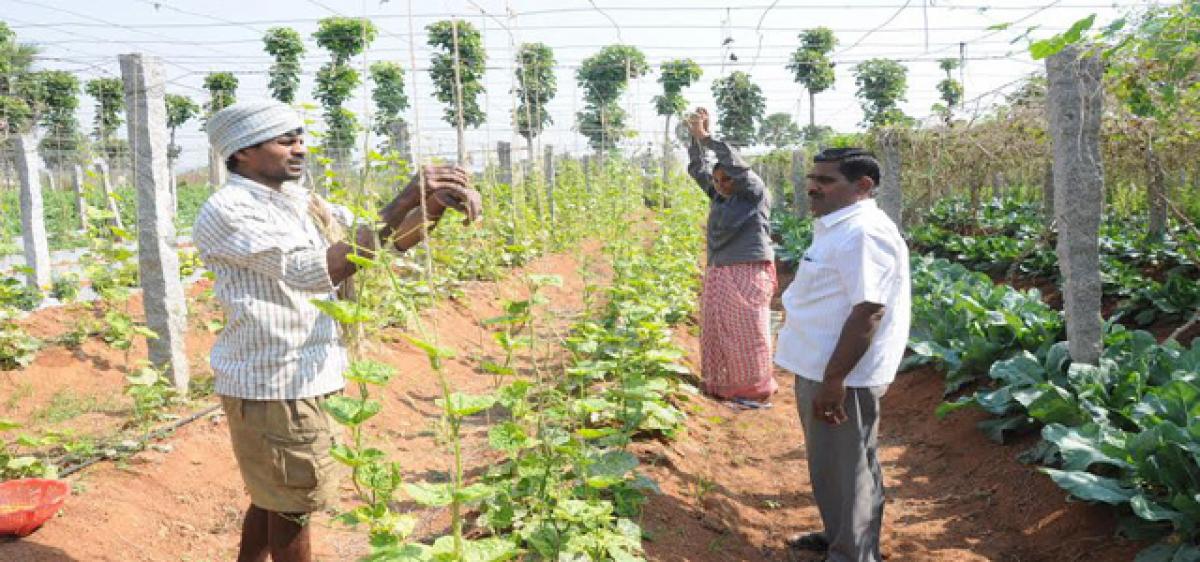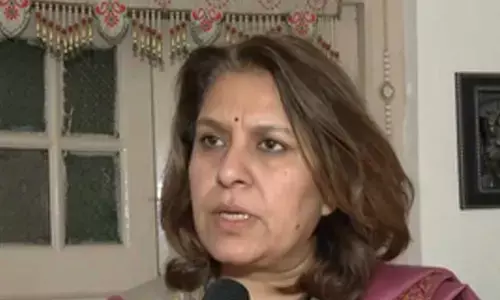Magic of multi-crop farming

Through sheer hard work and smart choice of multi-crop pattern, Eshwaraiah Goud, a retired deputy paramedical officer, has demolished the notion that farming cannot be lucrative.
Nalgonda: Through sheer hard work and smart choice of multi-crop pattern, Eshwaraiah Goud, a retired deputy paramedical officer, has demolished the notion that farming cannot be lucrative. By selling vegetables, flowers, fruits and milk simultaneously, he has been reaping good harvests not only in the context of yields, but also in monetary terms from his small patch of land here.
On his two acres of land at Garikalavbavi Gudem under the Nalgonda Municipal limits, the 67-year-old farmer Goud has built cattle shed on two guntas. He has been cultivating green grass on two guntas for the purpose of cattle feed. The rest of the land is used for growing vegetables, flowers, fruits and commercial crops.
The land has been divided into smaller portions and arrayed in rows of specified length and width. Different vegetables and fruit saplings like melons have been planted. Drip irrigation system has been installed to water the plants. Mulching is being carried out regularly to keep pests away. Red sanders saplings have been planted along the boundaries of the field. Each of the saplings, upon growing to maturity in 12 to 15 years, could yield nearly 12-15 kg of sandal heartwood.
Vegetable plants like tomato, brinjal, lady’s finger and green chillies are planted in rows. Creepers like snake gourd, ridge gourd, bottle gourd, etc, are also grown. A row of marigold saplings are planted between the rows of vegetable plants to protect them from insects and pests. Dil green, etc are also grown. Apart from them, mango, amla, sapota,whiteapple, custard apple, coconut, lime, pomegranate, guava , papaya, aloe vera, tulasi. etc are grown, fetching income throughout the year.
Speaking to The Hans India, Goud explained that though multi-crop farming involved more risks than conventional farming, it would ultimately result in greater yields and maximum profits. After his retirement from government service in 2008, he had turned a farmer and started cultivation on his two acres land.
Earlier, he used to cultivate gherkin, but could not get considerable profits. With the advice of a young farmer Rupam Ramesh, an expert in multi-crop farming, he started mixed crop farming last year and has been getting regular income by selling vegetables, flowers, fruits and milk to people and traders. With the assistance of just one or two labourers, and with an investment of Rs 50,000 per acre, he is able to get good, regular income.
By Deekonda Ravishankar
















